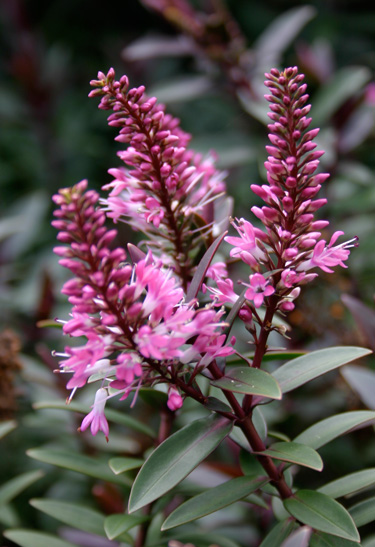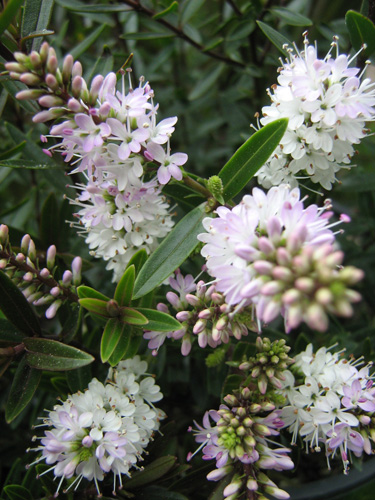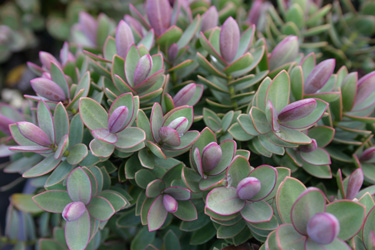Growing hebes
Hebe is New Zealand’s most diverse shrub genus, with nearly a hundred different species occurring across our two islands. They’re also our most extensively bred and cultivated plants, offering a bewildering choice of cultivars. They have recently been re-named back to what we used to know them as, Veronicas, but for simplicity we will continue to call them Hebes here.
Popular with gardeners who want a small evergreen shrub that flowers over a long season, hebes are also useful as massed ground cover or container containers. Their flowers bring bees and butterflies to the garden and they’re good for picking too. Plant a selection and you could have flowers most of the year.
Some of the best hebes are grown for their foliage alone. Some make great little hedges. Look for vigorous bushy varieties with small close-packed leaves. For a nice even hedge its best to plant small healthy plants.
Like their native New Zealand landscape, hebes are extremely diverse. Their gene pool extends from the coldest South Island habitats to the warmest parts of the North. So its worth doing some research when choosing a hebe to suit your particular soil and climate. Some hebes are extremely cold hardy while other’s are frost tender. Some refuse to thrive in humid conditions.
Disease resistance is a key goal among Hebe breeders and many of the modern hybrids will tolerate humid climates. That said, most hebes perform at their best and look good for longer if they are grown where they have ample air movement. Generally they flower best in full sun but many will grow very well in part shade, albeit with a few less flowers.
Hebes grow best in moist well-drained soil. Keep young plants well watered until established, especially over the summer months. Hebes growing in pots need more regular watering and feeding with slow release fertiliser or balanced liquid plant food. Avoid fertilisers high in phosphate.
As a hebe ages, it will naturally loose its neat and tidy shape, but regular trimming will help prolong a fresh and youthful shape. Because hebes flower on new growth, it is best to trim immediately after flowering in mid to late spring. For some varieties another trim in summer will be beneficial. Most hebes wont recover if you cut into bare wood below the level of the leaves.
6-Sep-2016

Hebe Pretty In Pink

Hebe Champagne

Hebe Red Edge

Hebe Emerald Gem


